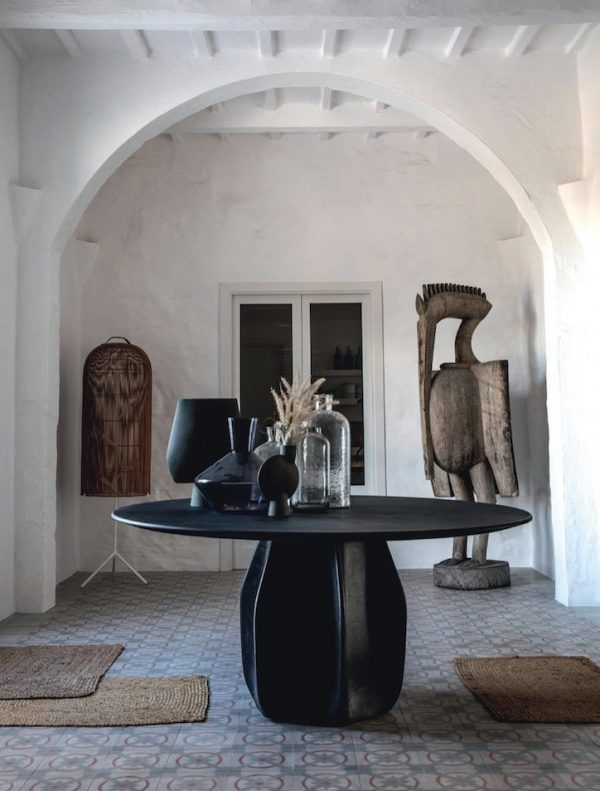Architects are designing a healthier living environment for the wellness-minded among us. Think a meditation courtyard with a reflecting pool. An open-air yoga studio hung with silken hammocks. A medicinal garden planted with calming herbs. It may sound like a tour of an ashram, but these are some of the features that mark a trend in luxury real estate: the mindful mansion.
Mindfulness is paying attention—it’s being present in the moment. When you build and design a house, you can design it in a way to cultivate mindfulness.
The path to inner peace may lie in the right amenities, or so the rising popularity of wellness real estate would suggest. Upscale home buyers are demanding eco-sensitive homes built with natural products—and opting for interior design that incorporates nature to reduce stress and promote mental clarity. To lure the enlightened buyer, luxury developers are offering morning yoga, mindfulness coaches and meditation chambers with ergonomic cushions.
Modern consumers are increasingly making wellbeing a top priority, as evidenced by the booming health and wellness economy.
The global wellness economy is valued at $4.2 trillion, according to the 2018 Global Wellness Economy Monitor report. Alongside this growth, the definition of health is expanding. While consumers most commonly associate “health” with physical condition (77%), nearly as many people (75%) say they think about mental health when they think about health, with around half of consumers associating sleep (58%) and mindfulness (43%) with health, according to a recent survey.
As consumers are more conscious of their health, they are turning a keen eye to their living environment.
And, given that most of us spend up to 90% of our time indoors, architects are designing homes that improve living environments for healthier inhabitants. “The science behind indoor environments that supports people’s health and wellness is a new frontier,” said Dr. Brent Bauer, Medical Director of the Well Living Lab. “It’s not just about physical health, people are also thinking of how our space affects us emotionally,” said Katherine Johnston, senior research fellow at the nonprofit Global Wellness Institute, who headed a study that tracked the expansion of the wellness industry into the real-estate market.
Wellness residences are places you can escape your screens and cultivate mindfulness – they incorporate heated reflexology floors, circadian lighting systems, large windows and high ceilings for maximum airiness. Being able to see green from every window really does impact your mood and well-being. Other design elements are more subtle, such as the use of one soothing colour for the walls and trim rather than contrasting shades, to create a sense of continuity and openness
Wellness real estate and technology company Delos is pioneering healthy home design, from building science to lifestyle. As part of their commitment to constructing a healthy living environment, Delos partnered with the Mayo Clinic on the Well Living Lab, which recently opened its second location in Beijing. The Lab is a “human-centred research facility dedicated to identifying how buildings—and everything that goes in them—impacts human health and well-being.”
The company, who counts wellness guru Deepak Chopra as an advisory board member, has created the “healthiest” condo in New York City. The apartment features amenities like anti-microbial surfaces, Vitamin C-filtered showers, in-duct aromatherapy and individually-calibrated circadian lighting systems.
In the kitchen, a Whirlpool refrigerator and Yummly app integrate to identify and track the contents of the fridge and recommend recipes. Throughout the house, the walls are constructed with antimicrobial drywall and paint, which absorb volatile organic compounds (VOCs) from the air. To further ensure inhabitants are breathing clean air, an advanced air purification system monitors air quality and removes harmful pollutants. Delos adds to this by circulating fresh air from outside into the house, while constantly monitoring environmental conditions within the home. They also delivers purified water to all appliances and fixtures within the home. Several elements combine to facilitates rest and relaxation; noise-reducing walls create a peaceful environment and Darwin’s circadian lighting technology promotes healthy sleep patterns.
With the wellness economy showing no signs of slowing down, healthy homes are poised to skyrocket.
“More and more architects, interior designers and engineers are working together with scientists for healthy design, and thinking about how to make the space more like human beings’ natural life,” agreed Xue Ya, Asia president at Delos Living, part of the team behind the Well Living Lab.
Wellness architect might replace varnished knotty pine panelling with walls of earthen plaster and baked steel. White oak floors might be pocked with dents and ripples to provide some of the stress relief of reflexology, hitting pressure points on the foot. “It’s like Thoreau going into the woods to find peace and quiet—you think a lot differently when you are sitting under a 200-year-old oak tree,” said Nick Jekogian, Walden’s developer.
The path to inner peace may lie in the right amenities, or so the rising popularity of wellness real estate would suggest. Upscale home buyers are demanding eco-sensitive homes built with natural products—and opting for interior design that incorporates nature to reduce stress and promote mental clarity. To lure the enlightened buyer, luxury developers are offering morning yoga, mindfulness coaches and meditation chambers with ergonomic cushions.
“It’s not just about physical health, people are also thinking of how our space affects us emotionally,” said Katherine Johnston, senior research fellow at the nonprofit Global Wellness Institute, who headed a study that tracked the expansion of the wellness industry into the real-estate market.


